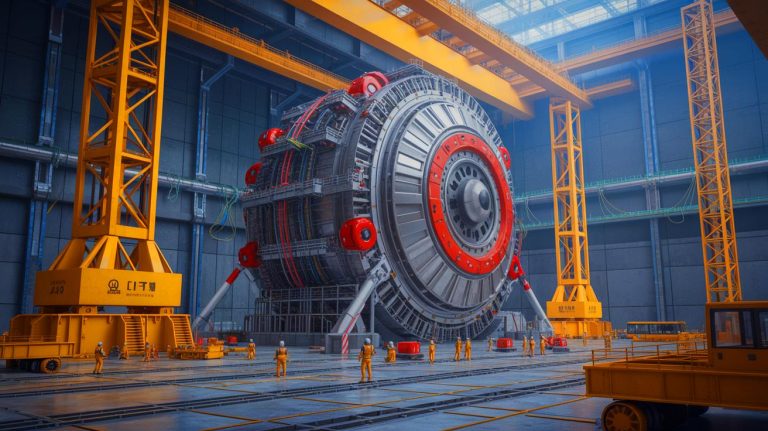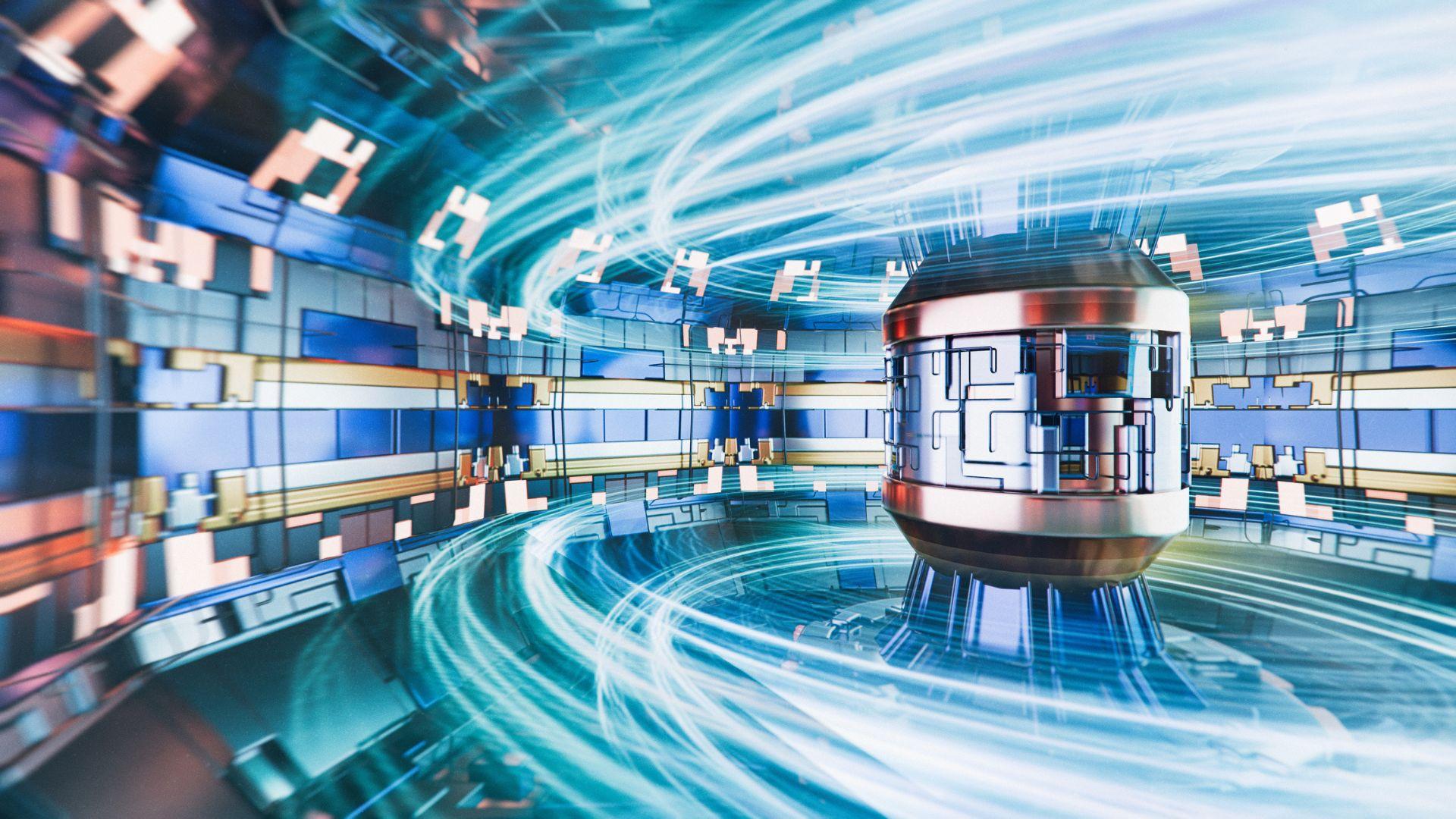| IN A NUTSHELL |
|
The world is on the brink of a new era in energy production, with nuclear fusion technology leading the charge. As nations strive to develop sustainable and efficient power sources, China is making significant strides with its Burning Plasma Experimental Superconducting Tokamak (BEST) reactor. This ambitious project aims to surpass existing energy production benchmarks and position China as a leader in fusion technology. With its completion slated for 2027, the BEST reactor could potentially revolutionize the global energy landscape, providing a cleaner and more efficient alternative to traditional energy sources.
BEST Fusion Reactor: A Leap Forward
The BEST fusion reactor represents a significant advancement in nuclear fusion technology. Built in the widely accepted tokamak design, this reactor utilizes a doughnut-shaped vessel to contain and manage plasma heated to extreme temperatures. These temperatures, surpassing those of the sun’s surface, facilitate the fusion of hydrogen isotopes into helium, releasing substantial amounts of energy. Unlike nuclear fission, fusion produces minimal radioactive waste, which is easier to manage and poses less of an environmental threat.
While many fusion reactors serve primarily as experimental platforms, the BEST reactor is designed to achieve real-world energy production, marking a crucial step towards commercial viability. Positioned as an intermediate phase between China’s Experimental Advanced Superconducting Tokamak (EAST) and the future Chinese Fusion Engineering Demo Reactor (CFEDR), BEST showcases China’s commitment to advancing fusion technology. The project’s successful completion could pave the way for future advancements in clean energy and potentially transform how we power our world.
Competing with the US at ‘China Speed’
China’s rapid progress in assembling the BEST reactor underscores its determination to outpace competitors like the United States in the race for fusion energy supremacy. The project involves the integration of tens of thousands of components, totaling approximately 13 million pounds. Although it employs less powerful magnets than the US-based SPARC fusion facility, BEST aims to achieve a fivefold energy gain, a significant improvement over SPARC’s twofold target.
China’s accelerated approach to the BEST reactor’s construction highlights its strategic priorities in the energy sector. Initiated around the same time as SPARC, China’s project has quickly advanced through civil construction and component installation phases. Experts emphasize the need for meticulous precision during assembly, with installation errors kept within a millimeter range. This rapid progress positions China to potentially surpass the US in delivering higher energy yields from fusion technology.
Implications for the Global Energy Landscape
The successful implementation of the BEST reactor could have profound implications for the global energy landscape. As nations grapple with the challenge of reducing carbon emissions while meeting growing energy demands, nuclear fusion offers a viable solution. By replicating the energy generation process of stars without emitting greenhouse gases, fusion technology presents a sustainable alternative to fossil fuels.
China’s advancements in fusion technology not only highlight its potential leadership in clean energy but also set a benchmark for other nations to follow. The successful operation of the BEST reactor could accelerate international efforts to develop and commercialize fusion energy, fostering global collaboration and innovation. As countries invest in fusion research and infrastructure, the prospect of a fusion-powered future becomes increasingly tangible.
The Road Ahead: Challenges and Opportunities
Despite its promise, nuclear fusion technology faces several challenges before it can be widely adopted. Technical complexities, high costs, and the need for extensive research and development are significant hurdles that must be overcome. However, the potential benefits of fusion energy, including its sustainability and efficiency, make it a compelling area of exploration.
China’s progress with the BEST reactor serves as both an inspiration and a challenge to other nations. As the world watches China’s advancements, the question remains: can other countries match or exceed these achievements? The race to harness fusion energy is not just a competition but a collaborative effort to create a sustainable future. As we move forward, the pursuit of fusion technology invites us to consider its potential impact on our world and how we might collectively rise to meet the challenges it presents.
As the world anticipates the completion of China’s BEST reactor, we stand at the threshold of a new era in energy production. The success of this project could redefine our approach to energy, offering a cleaner and more efficient alternative to traditional sources. As nations continue to invest in and explore fusion technology, the question remains: how will these advancements shape our future energy landscape?
Did you like it? 4.4/5 (21)








Wow, this is mind-blowing! 🌍 Can’t wait to see what 2027 brings!
Thank you for the detailed article! Very informative. 😊
How will this impact the coal industry in China?
Hope they achieve it! We need more clean energy solutions.
I’m skeptical. Fusion has been “just around the corner” for decades.
Is there any way to get involved in fusion research?
What happens if they don’t meet the 2027 target?
Why aren’t more countries investing in fusion technology?
Can fusion energy be decentralized, or will it require massive infrastructure?
This could change EVERYTHING! 🌟
How do they plan to manage the plasma at such high temperatures?
Is this reactor environmentally friendly compared to solar or wind?
Can fusion energy be used to power electric cars directly?
Does this mean cheaper electricity bills in the future? 💡
Fusion technology seems promising, but what about the initial investment?
Is fusion energy really the answer to climate change?
How does China’s approach differ from the US’s SPARC project?
Finally, some good news in the energy sector! 🌞
What’s the biggest challenge they face in achieving this energy gain?
Is there any proof that they can achieve this fivefold energy gain?
How long would it take to build fusion reactors worldwide if successful?
Hope this isn’t just another overhyped project. 😒
China’s making waves in tech and energy! Impressive.
What safeguards are in place to prevent accidents?
This could be a game-changer for developing countries. 🌎
What are the environmental impacts of building such a reactor?
Exciting news! How soon can we see the impacts of this technology?
Is the energy produced by fusion comparable to that of fossil fuels?
How does the energy output compare to renewable sources like wind or solar?
China’s fusion reactor sounds promising, but what about the costs involved?
How does this compare to the ITER project in France?